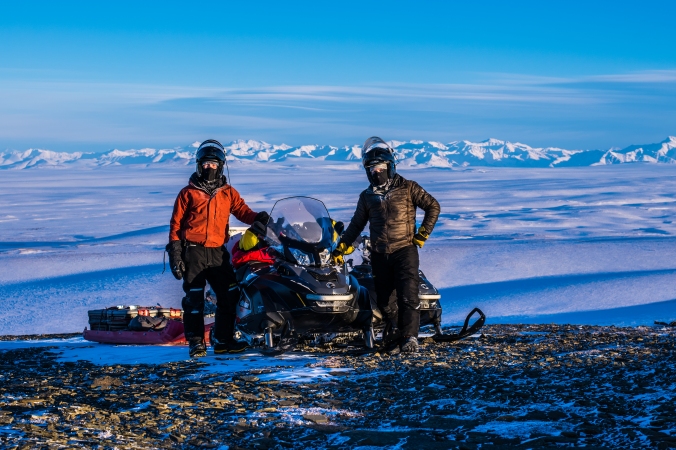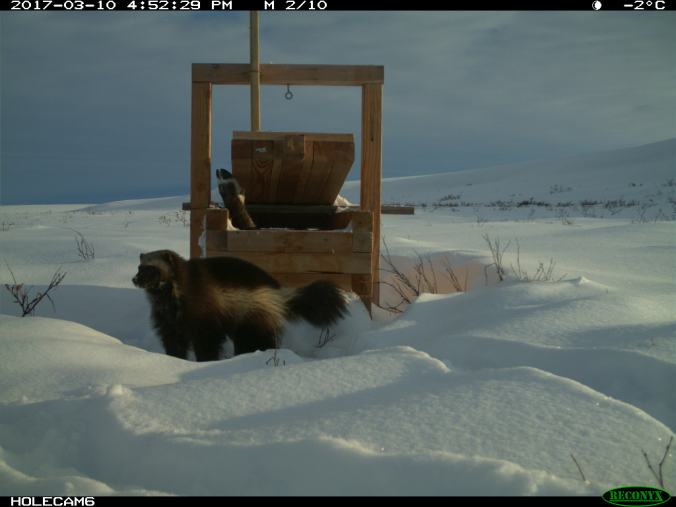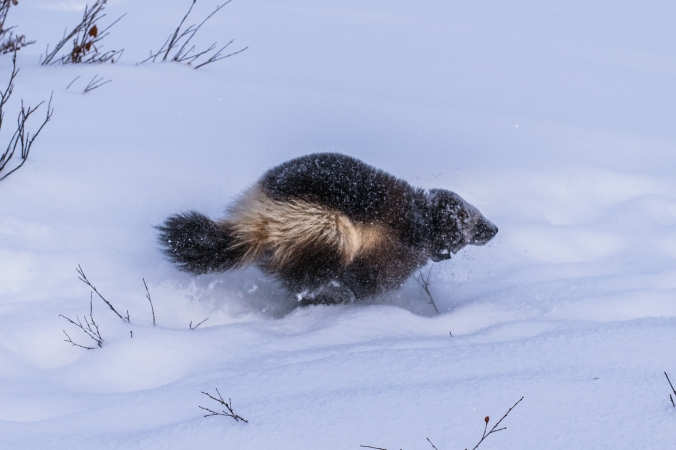The alpenglow cast long shadows as we approached the summit. Here in the foothills of the Brooks Range, on top of an isolated peak, we were looking for wolverines. More specifically, we were looking for wolverine snow-holes – places where they had stopped, dug a tunnel into the snow, and rested, sometimes for hours or days.

The WCS wolverine field crew out tracking wolverines, March 2017. Photo credit Matt Kynoch.
The focus of our project is understanding how wolverines use these holes, and what snow characteristics are important to them. In a warming Arctic, this question takes on a heightened significance: will earlier spring snowmelt affect the animal’s ability to raise kits and find appropriate shelter?

A young female wolverine stands outside the trap that will eventually temporarily trap her. Photo is taken by a Reconyx remote camera.
The 2017 field season is off to a promising start. The young female pictured above is the fourth of our captures so far. On her first visit to the trap, before it was set, she played with the caribou leg behind her for hours, rolling underneath it, tugging, fighting to get it free. Once we did set it, it didn’t take long for her to be tempted in.
On account of a rather round, portly build, we’ve started calling her Po. Her processing went smoothly, and she was up and running again within a few hours. That was three days ago. Since then, she’s traveled 20 km, summited a mountain, and led us to seven different snow-holes. Other animals that we’ve captured appear to make and use snow-holes at a similar, or slightly lower rate – around one per day. Some of the animals are re-using holes, returning to them after a week’s absence, including holes originally created by other wolverines!

Example of a wolverine snow hole. Wolverines use these holes as resting sites, to raise kits, and possibly to cache food. Photo credit Tom Glass.
Pictured above is where Po took a 10-hour nap shortly after she left the trap. She’s now out on the tundra, wearing a GPS collar that includes an accelerometer and light-logger, instruments that will help us better understand the energetics of her movements, and how she and other wolverines use snow for structure here on the North Slope. Only through such detailed investigation can we fully appreciate what these animals need to thrive in this expansive landscape, and what threats they face in a changing world.

“Po” the female wolverine after being fitted with a satellite collar and released on the North Slope of Alaska. Photo credit Matt Kynoch.
